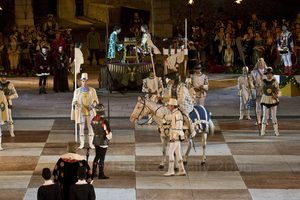About
Padua University has a long history of astronomical studies. Galileo Galilei used his telescope for the first time and made his famous discoveries while living in the city. The university transformed an old tower into La Specola Observatory during the late 18th century, but by the beginning of the 20th century, it was deemed obsolete.
In 1942, the observatory was moved to a new location on the Asiago plateau, around 55 miles (90 kilometers) northeast of Padua. The location was chosen for its low light pollution and relative remoteness. The telescope was named after Galileo and was constructed to be the largest in Europe.
The project was ideated by Jewish architect Daniele Calabi. The observatory became fully operational in 1946, with research focusing mainly on comets, variable stars, nebulas, and star clusters. In 1958, the large telescope was joined by the smaller Schmidt telescope to search for supernovae. The observatory is still in operation today and hosts a museum of astronomical instruments.
Related Tags
Flavors of Italy: Roman Carbonara, Florentine Steak & Venetian Cocktails
Savor local cuisine across Rome, Florence & Venice.
Book NowCommunity Contributors
Added By
Published
September 27, 2019























